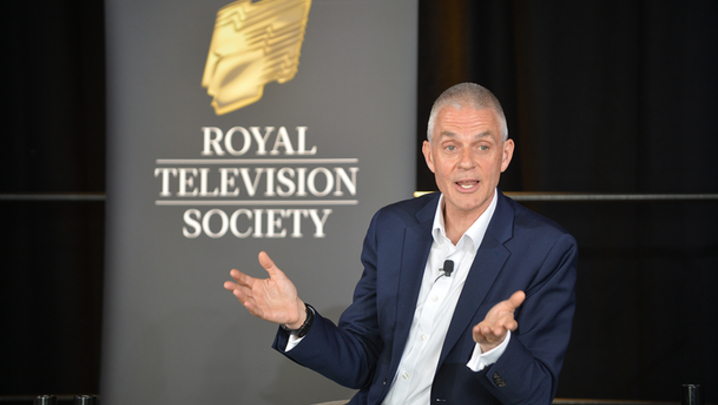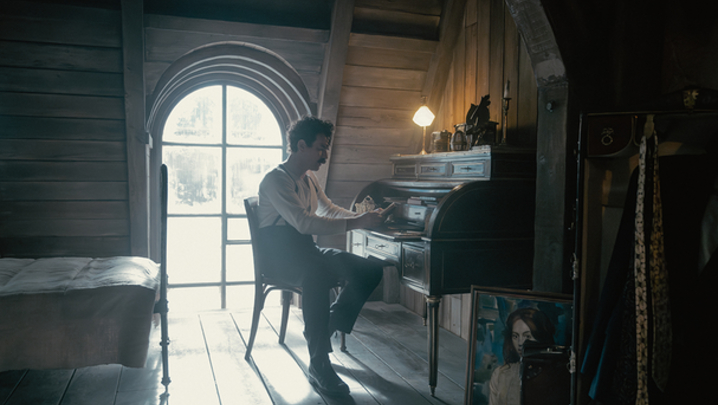Gordon Jamieson looks at how a succession of small steps has transformed the Amsterdam tech-fest.
As the International Broadcasting Convention (IBC) approaches its 50th year, the annual conference and trade exhibition is evolving at the same dizzy speed as the industry it serves.
IBC’s metamorphosis from 500 delegates and three dozen vendors in a corner of a London hotel in 1967 to 55,000 attendees and 1,600 exhibitors in Amsterdam’s sprawling RAI centre is more than simply one of scale. The organisers have made increasing efforts to curate and integrate the technological developments on the show floor with the themes being debated in the conference programme.
Jostling for our attention are the big, highly visible advances, such as immersive virtual reality, Ultra-HDTV and drones. But the hesitant migration of the broadcasting industry towards an internet-protocol (IP) infrastructure is every bit as revolutionary as the shift from standard-definition pictures to HDTV and now to Ultra-HDTV.
IP is inherently far more flexible and cost-effective – but not necessarily as reliable as the technologies that currently connect each part of the production and transmission chain. A wholesale, overnight switchover is simply not feasible, so television companies need each new deployment of IP connectivity to work reliably within their existing infrastructure.
IBC is addressing this with an IP Interoperability Zone, at the heart of which is a live, IP-connected studio managed by Belgian broadcaster VRT and the European Broadcasting Union, together with 12 technology suppliers. In all, some 30 companies are demonstrating their IP products in the zone.
Visitors will be encouraged to verify for themselves how the studio set-up handles signal timing and transport, as well as discussing case studies with vendors. “It will be a showcase for the reality of the technology, and a demonstration that the industry is converging on a common roadmap,” says Michael Cronk, Grass Valley VP of core technology.
IP and interoperability will also be prominent in the IBC Content Everywhere area and conference sessions. Content Everywhere is one of IBC’s most heavily curated strands, with the emphasis firmly on connected devices, social media, personalisation and cloud services, rather than on the traditional broadcast environment.
“Attendees tell us that the rate of change in their industry is accelerating, and that the amount of information they are confronted with about new technologies is vast and growing – and they say they need it curated for them,” says IBC Chair Tim Richards. “We are trusted as an honest and reliable provider of business information.”
Content Everywhere has been a proving ground for this approach to curation. IBC originally intended to use the Content Everywhere brand to expand its geographical range, with plans for regular shows in the Middle East and Latin America. Dismal economic conditions in those regions quashed that ambition. But the experience of putting on a single show in Dubai early last year paid dividends, with a healthy increase in Middle Eastern visitors to IBC last September.
“IBC is not a European show per se: we attract manufacturers, speakers and visitors from all over the world. Increasingly, it is a very broad church that we are trying to serve,” says Richards.
“New companies sometimes find themselves thrown into the deep end without arm bands in this industry."
There was a time when CEOs didn’t go to IBC: instead, the most senior visitors were chief technology officers and their senior engineers pushing shopping trollies around what was effectively a specialist supermarket.
IBC’s Leaders Summit may have started off as something of a crèche for CEOs in the midst of what was still quite a hardware-focussed market, but it has been a very successful part of the convention’s evolution.
“Four years ago,” says IBC’s CEO, Michael Crimp, “I’m not sure that WPP’s Sir Martin Sorrell would have seen IBC as a natural place to speak or to inform himself by speaking to other attendees. We are pleased that thought leaders who want to talk about the business of media know that there will now be an audience here for their ideas.”
This year, there will be sessions on Eurosport’s strategy to sign up 1 million open-internet subscribers by 2017, and on Spotify’s experience of changing the way audiences consume music. IBM Global Business Services will present empirical research on the changing shape of television. But, as with previous summits, the debate will remain behind closed doors and the guest list will remain select, with no more than 150 media chieftains in attendance.
Speakers this year include: Alex Green, Managing Director of Amazon Video; Dominique Delport, Chair of Havas Media Group; Gidon Katz, Managing Director of Now TV; and Susanna Dinnage, Managing Director of Discovery Networks UK & Ireland.
IBC’s Future Zone is a formal part of the Leaders Summit tour, as well a popular destination for ordinary ticket holders. “It is an opportunity to give senior people pointers to the future so that they can make informed strategic decisions,” says Crimp.
On show will be ground-breaking prototypes and proofs of concept from 18 of the world’s R&D labs. Among them will be US manufacturer Sphericam. It will be demonstrating a fully spherical, 360-degree camera that can record Ultra-HDTV video at 60 frames per second – then automatically stitch the component pictures together and live stream them to a smartphone, tablet or VR headset. The company is now accepting pre-orders for its $2,500 Sphericam 2 model.
The overarching trend toward IP-based infrastructure and software tools will also be on display in the IBC Launch Pad area, where 23 first-time exhibitors will be gathered.
“New companies sometimes find themselves thrown into the deep end without arm bands in this industry, and they are up against companies that have been exhibiting at IBC for 50 years,” says Crimp. In return for providing marketing assistance – and a degree of hand-holding – to these start-ups, IBC can push the range of products on show that little bit further towards the bleeding edge. This, in turn, widens the appeal of the exhibition.
Another feature designed both to bring in new punters and demonstrate to regular attendees how the boundaries of “television” are become ever more porous is Hackfest. IBC describes Hackfest, now in its second year, as a creative playground for software developers, designers and entrepreneurs. Around 100 of them have been invited to spend 36 hours brainstorming apps or ideas for discovering or sharing content in education, entertainment or sport.
To an extent, Hackfest is an unashamed pitch to bring in young, cool celebrities but, as Richards points out, app development “is part of our new reality, so it is important that we expose people in the more traditional parts of the content business to this way of working. It is also about crossfertilisation.” At least some of the companies attending IBC must agree, because several of last year’s hackers were offered jobs on the strength of their performance.
Perhaps the most spectacular event at this year’s IBC will be a presentation by Nasa – the space agency has been a ground-breaking TV producer since its inception. Carlos Fontanot, imagery manager for the International Space Station, and Kelly Humphries, the voice of mission control for more than 50 shuttle missions, will talk delegates through six decades of space exploration video.
Multi-Oscar-winning director Ang Lee, famous for his innovative uses of new production technologies, will deliver the Big Screen Keynote, using clips from his latest film, Billy Lynn’s Long Halftime Walk.
While such crowd-pleasers certainly play a role in boosting visitor numbers, getting potential buyers and sellers together is still IBC’s raison d’être. And where the tech fest can really add value is the degree to which it can improve attendees’ picture of where television is headed before they shake on that deal.
Crimp is clear that “curation across the whole of IBC is our next big step” and that the organisation will have to develop more in-house editorial expertise in order to deliver useful content all year round.
Future IBC delegates may be able to extend their creative congress long after their footsore week in Amsterdam.







